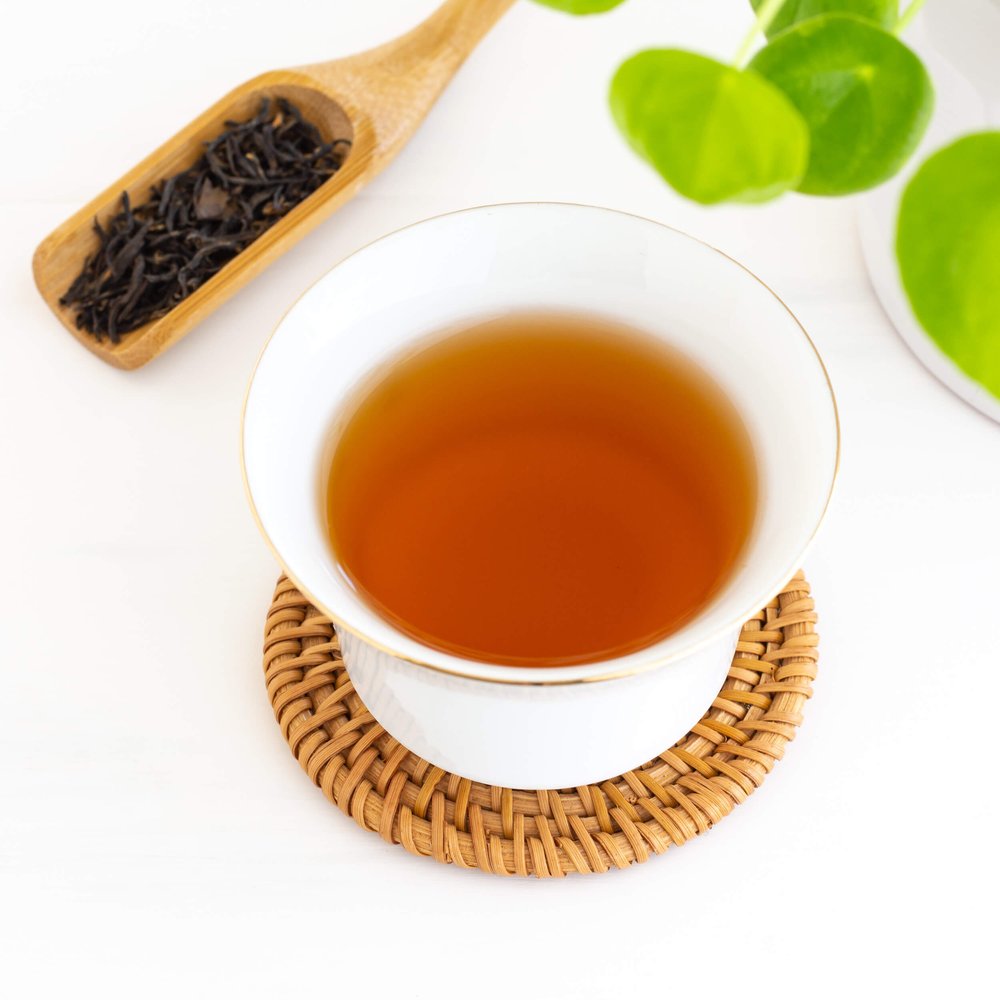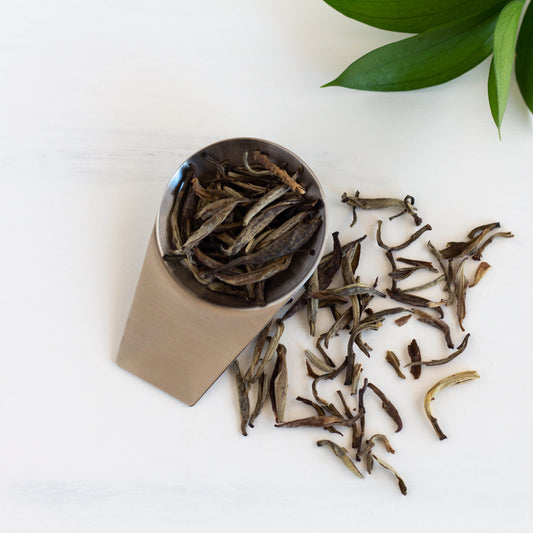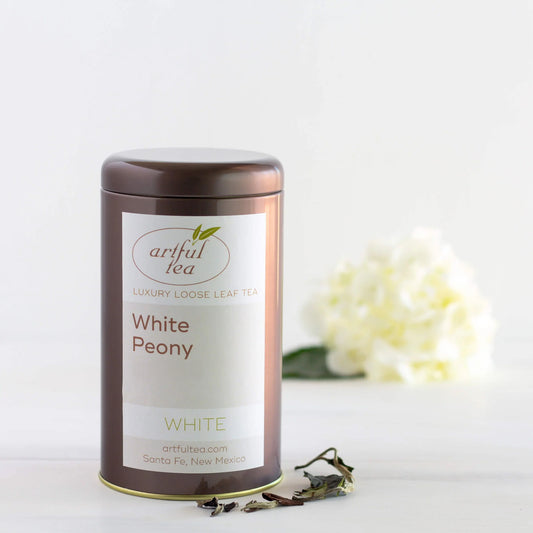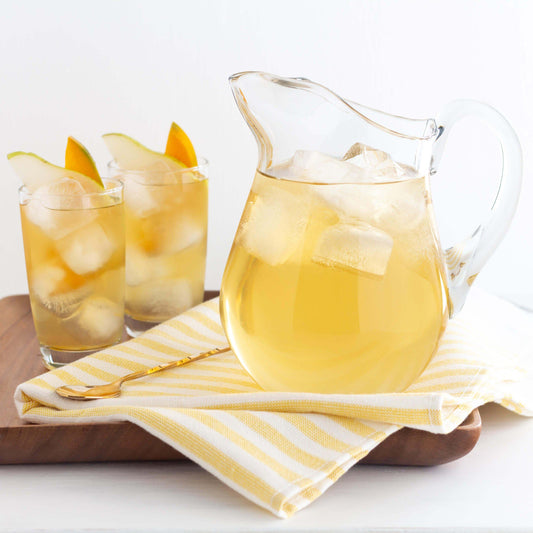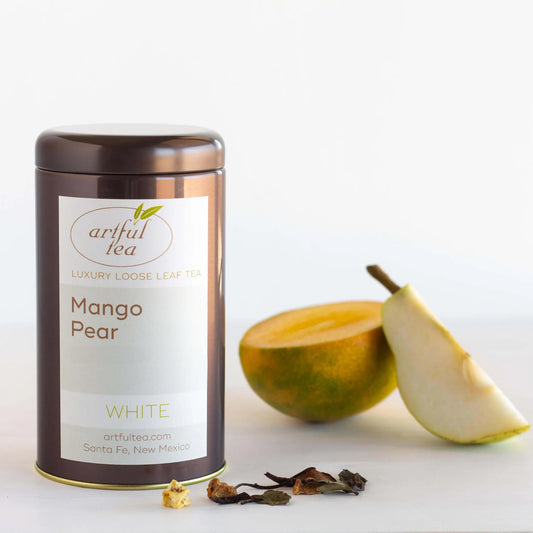White tea and green tea share many similarities: these two types of tea are actually produced from the same plant, and contain many of the same properties and health benefits. While these teas are similar, there are a few important differences between these two types of tea. Green teas tend to brew up a yellowish-green color, with grassy and vegetal notes and a low caffeine content. White teas tend to be even lighter and mellower, and are often very low in caffeine.
White tea vs. green tea: the basics
White tea is:
- Originally from China, and now also grown in neighboring countries like Nepal.
- Leaves are air-dried in order to halt oxidation and are minimally processed.
- Tends to be very low in caffeine, although silver needle teas can be higher.
- Known for its extremely light body and mellow, slightly fruity taste.
Green tea is:
- Originally from China, and now also grown in Japan and other Asian countries.
- Leaves are pan-fired or steamed in order to halt oxidation, and may also be pressed or curled into different shapes.
- Tends to be low in caffeine, although shade-grown green teas can be higher.
- Brews up into a golden-green liqueur with grassy, nutty, and vegetal notes.
Differences between white tea and green tea
While green tea and white tea share many similarities, there are some important differences between these two types of tea. These include:
1. Country of origin
White tea is primarily produced in China, although some speciality white teas are produced in countries like Nepal. Green tea is primarily produced in China and Japan, but may also be produced in other Asian countries.
2. Processing method
White teas are typically air-dried and undergo minimal processing. Green teas are either pan-fired or steamed in order to halt the oxidation process, then pressed or shaped into their final forms.
3. Visual appearance
White teas tend to look either like actual leaves in the case of full-leaf white tea, or like downy, white-tipped buds in the case of silver needle white tea. The tea leaves can be white, brown, or light green in color. White teas brew up into a light, gold-colored liqueur.
Green teas are typically pressed flat into needle-like shapes, or shaped and dried into curled shapes. As the name suggests, green tea leaves are usually green. When brewed, green teas can range from a deep emerald color to a pale yellowish-green.
4. Flavor
White teas tend to be very mild in flavor, and are sometimes described as having apple-like and hay-like notes. Green teas tend to be slightly more robust, and have nutty, grassy, and vegetal notes.

What is green tea?
Green tea is produced from the leaves of the camellia sinensis plant. These leaves are usually either pan-fired or steamed in order to halt the oxidation process and preserve the bright green color and light, grassy character of the tea. These leaves are then infused in hot water in order to prepare the tea. Green tea originated in China, and is now cultivated in many other Asian countries, including Japan, Vietnam, and Korea. There are many different kinds of green tea produced from different varietals of the tea plant.
How to prepare green tea
Preparation methods for green tea vary depending on the type of tea you’re brewing. In general, green teas are brewed at a much lower temperature than other types of tea, with a recommended water temperature of 140-175 degrees. Green teas are also typically infused for a shorter period of time than other types of tea, with a recommended steeping time of anywhere from 1-4 minutes depending on the tea.
Our green teas
We carry a variety of both classic and flavored green teas. Our Chinese green teas include Dragon Well, Chun Mee, and Gunpowder, while our Japanese green teas include Gyokuro, Kabusecha, Sencha, and more. We also offer a large selection of flavored green teas, from classics like Moroccan Mint and Jasmine Yin Cloud to creative blends like Winter Forest and Sunrise Melody.

What is white tea?
White tea is produced from the leaves of the camellia sinensis tea plant and is very minimally processed. This type of tea can be produced from the first downy tips of the tea plant, which produces silver needle white tea, or from more mature leaves. After harvesting, the leaves are air-dried. Unlike other types of tea, white tea usually undergoes little to no further processing. White tea tends to be the lightest-tasting and lowest-caffeinated tea.
How to prepare white tea
White teas are delicate, and optimal preparation involves steeping the tea in water that is steaming but not yet boiling. To prepare white tea, heat water to approximately 180 degrees. We recommend using one teaspoon of tea leaves for every six ounces of water. Steep the tea for two to three minutes, then remove the leaves and enjoy. White teas can be infused multiple times in order to enjoy successive cups of tea using the same leaves.
Our white teas
At ArtfulTea we carry a wide range of white teas, from delicate high-end silver needle teas to fruit forward, full-leafed teas suitable for everyday drinking. Silver tip needles teas include Bashan Silver Tip and Jasmine Silver Needle. Other white teas include Himalayan Spring, White Peony, and Mango Pear.
